June 20, 2016
Engineering Discovery Days 2016

Elyse O’Callaghan

Parastoo Jabbari
Last quarter, Sustainable Transportation Lab grad students participated in the 101st annual Engineering Discovery Days (EDD) at the University of Washington. EDD is a large-scale, two-day STEM outreach event that allows graduate students and professors in the College of Engineering to present their research in creative and interactive ways to K-12th grade students, teachers, and parents from the surrounding area. According to the Dean of the College of Engineering here at the University of Washington, this year’s event hosted more than 10,000 visitors from as far as Yakima, Olympia, Port Orchard, and Mount Vernon and required 1,200 CoE volunteers to coordinate and execute the event.
We decided to put together a booth and develop a few activities to cover the broad range of age groups present at the event, and with the support of the CoE and boots-on-the-ground support from fellow research group students; Riley provided emergency candy purchases and helped man the booth, and Xiasen and Michiko helped put together posters and served as guinea pigs for our transportation corridor optimization game i.e. they sat on the floor of our office and played with toy trucks.
Our exhibit had two main sections: 1.The game part and 2. the discussion part. For the game section we designed an optimization game with the purpose of making student think about the tradeoffs between convenient, budget and number of people who can use the services. We provide each group of players with limited number of toy cars, trucks, mini-vans, buses, trains and a board with a section of the road which had HOV lane. Each vehicle could carry specific number of people and it worth specific amount of dollars and if they were used on HOV lane they could carry one more extra person. We gave them a budget and asked them to try to pass as many people as they can through the road section. While they were trying to do that we wanted them to talk about their logic and other factors they considered, for example why they are willing to pay more money for a bus to carry more people instead of using single occupancy vehicles which would cost less and take less space.
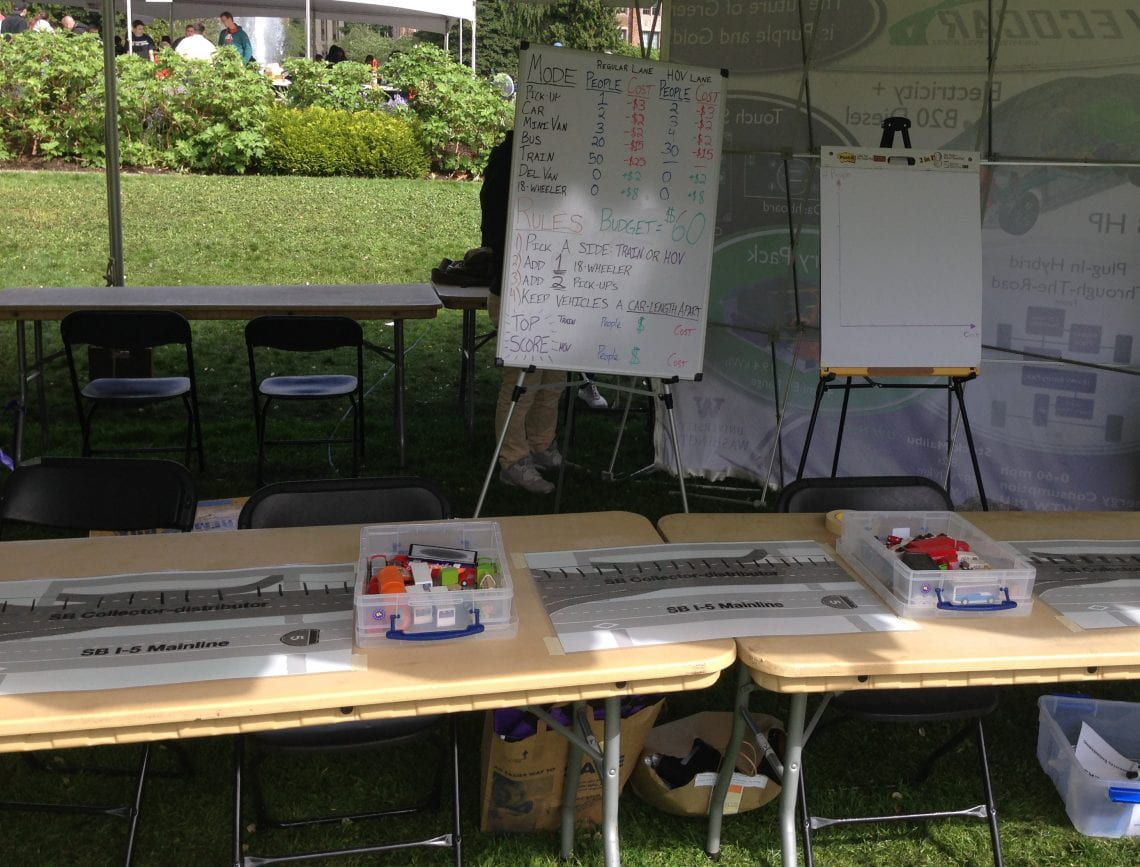
The booth set up before arrivals on Saturday
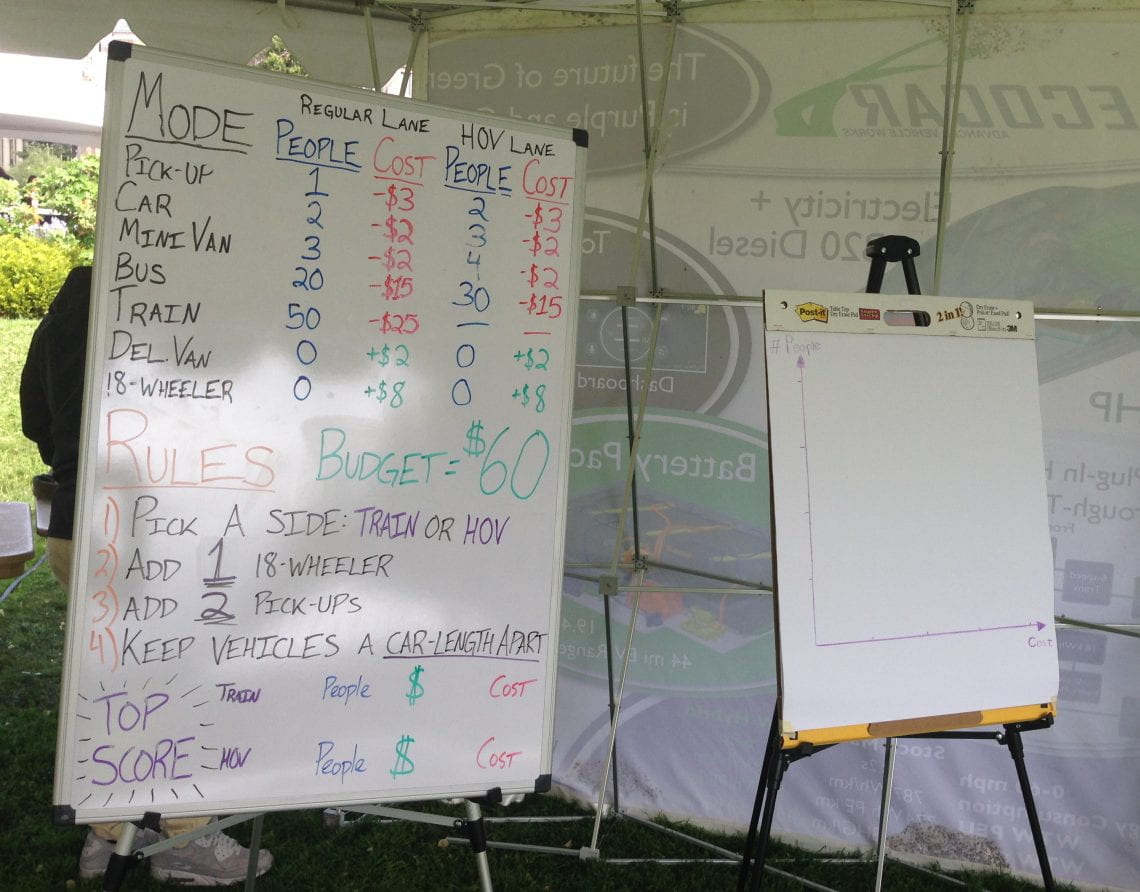
Optimization game rules and scoreboard
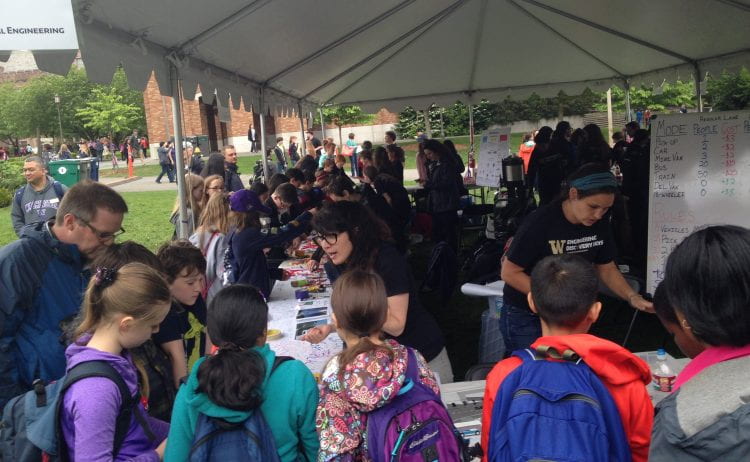
Friday funday – manning the booth with EDD in full swing
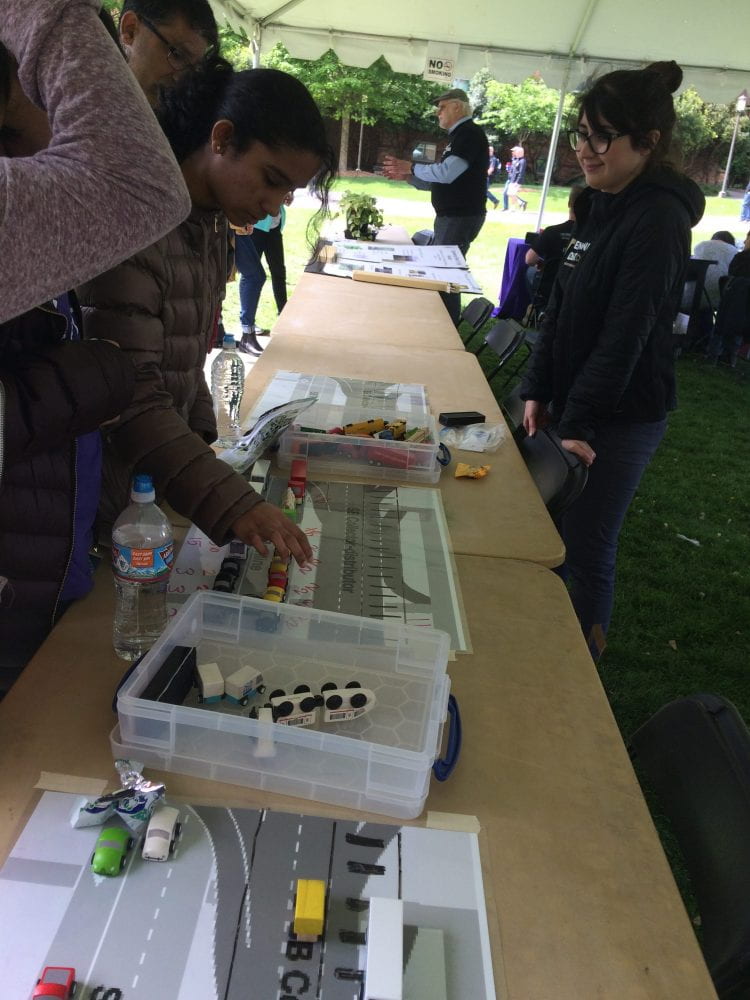
Parastoo explains the optimization game during the much calmer Saturday session
The goal of the game was simply to engage students of all ages and encourage them to think about transportation in terms of moving people rather than moving specific types of vehicles. The result of this experiment was very interesting. Majority of players appreciated the existence of HOV lane and tried to maximize its usage. In process of game a lot of students replaced their cars with buses and minivans. After a crazy day of many different game results on Friday, we decided to track game results on Saturday. Unfortunately, there weren’t as many visitors on Saturday which limited our sample size, but we decided to graph the results nonetheless; they show the general trend of the train option moving more people but for a higher price. While the game was only roughly calibrated, we were happy to see the enthusiasm and creativity that the students brought to the table.

The second section of our exhibit was discussion part. We had prepared pictures of different modes of transportation including conventional ones such as buses, bikes, cars, some modern ones such as carsharing and ridesharing system and some of the futuristic modes such as the hyperloop and automated cars. We asked students to talk about their ideas about them, their pros and cons, and particularly the barriers and potential of the more futuristic modes. Here are some the ideas written by students:
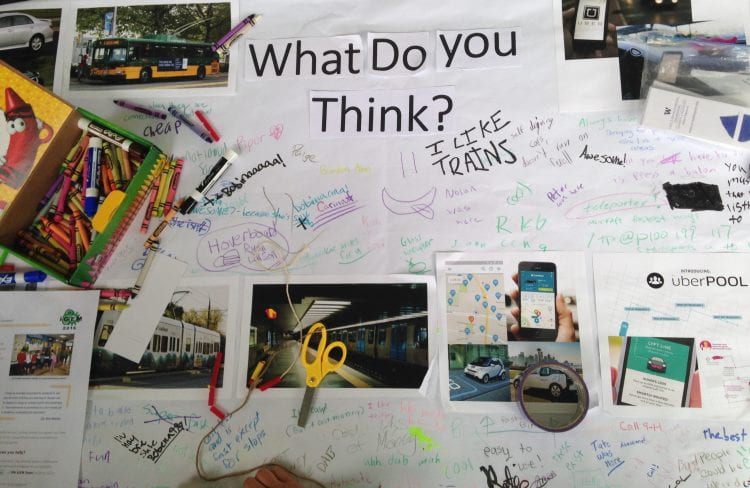
Ideas about modes
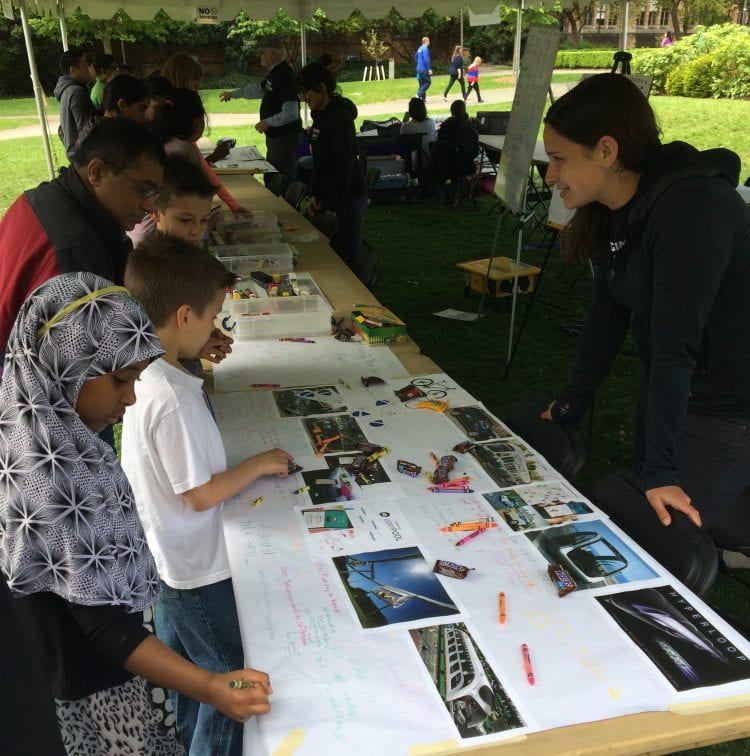
Elyse discusses mode attributes
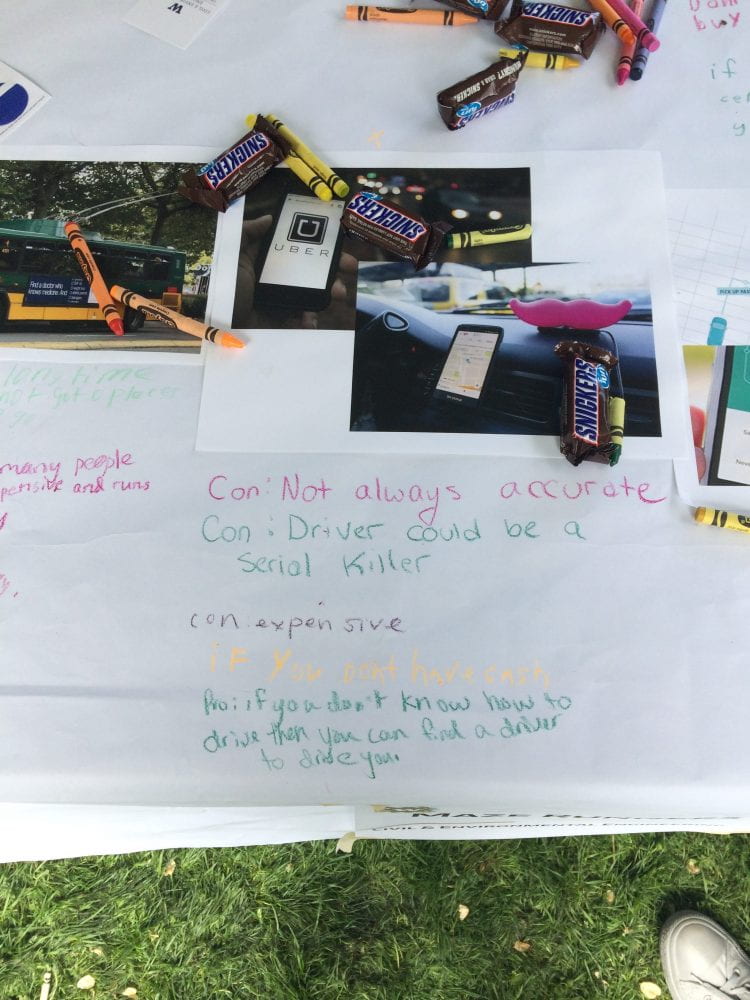
Uber driver stranger danger
Ultimately, we both thoroughly enjoyed the experience and can’t wait to tweak the booth and get more students (and parent chaperons) thinking about sustainable transportation next year!
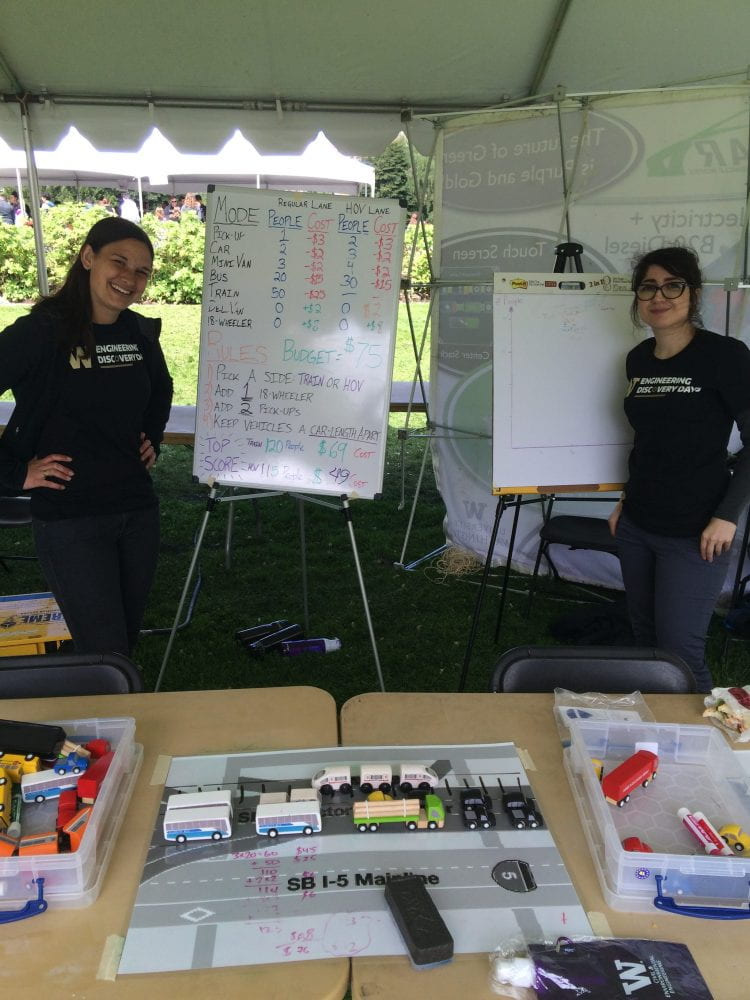
One EDD down, more to go!
Recent Comments